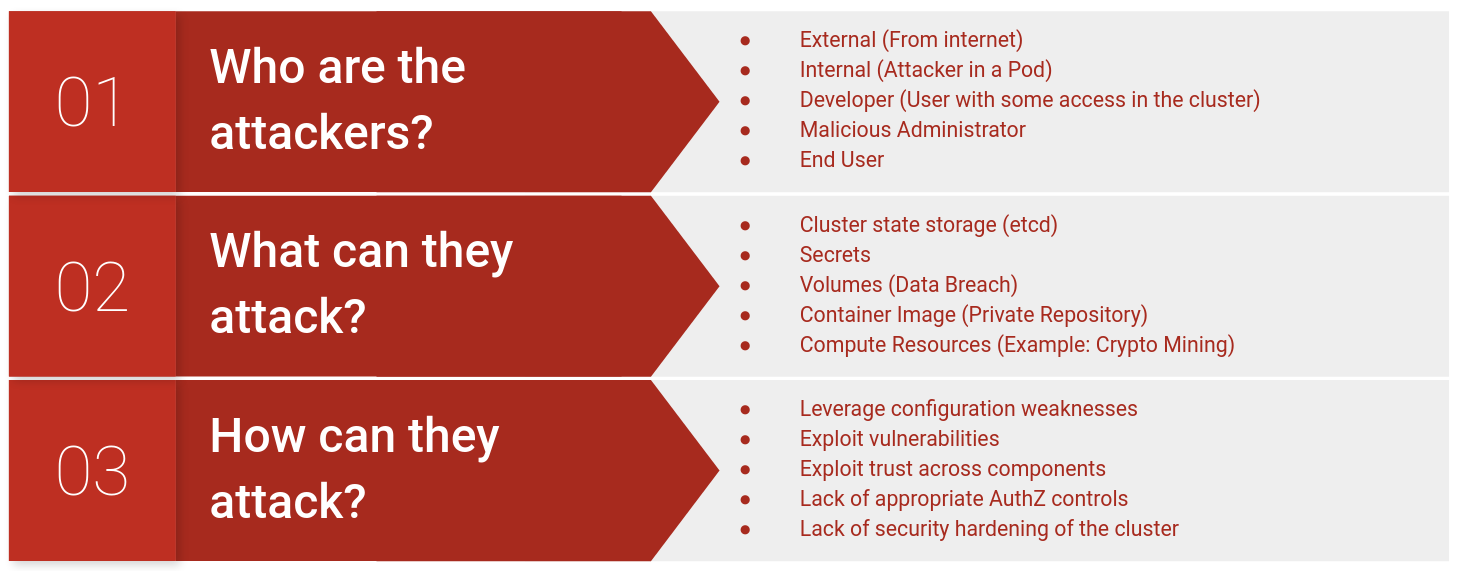Threat Modelling
Threat modelling works to identify, communicate, and understand threats and mitigations within the context of protecting something of value.
Kubernetes is a complex, distributed system with multiple components. In order to perform an effective security testing, it is important to understand how different components interacts with each other and answer questions such as
- Who are the attackers?
- What can they attack?
- How can they attack?
We will present a high-level threat model in this document, which in turn will drive the different chapters in this document. The objective is to allow a tester to chose what is applicable and what is not based on the threat model and the level of access available to the tester.
A simple threat model is presented below as an example. The intention is to get testers started with thinking in terms of a threat model. The threat model is further expanded in subsequent chapters.

A detailed threat model is already developed as part of a security audit conducted by Trail of Bits along with Kubernetes Security Audit Working Group. We refer to this threat model as required to conduct an effective security testing of a Kubernetes cluster.
References
- https://github.com/kubernetes/community/tree/master/wg-security-audit
- https://owasp.org/www-community/Application_Threat_Modeling
- https://infosec.mozilla.org/guidelines/risk/rapid_risk_assessment.html